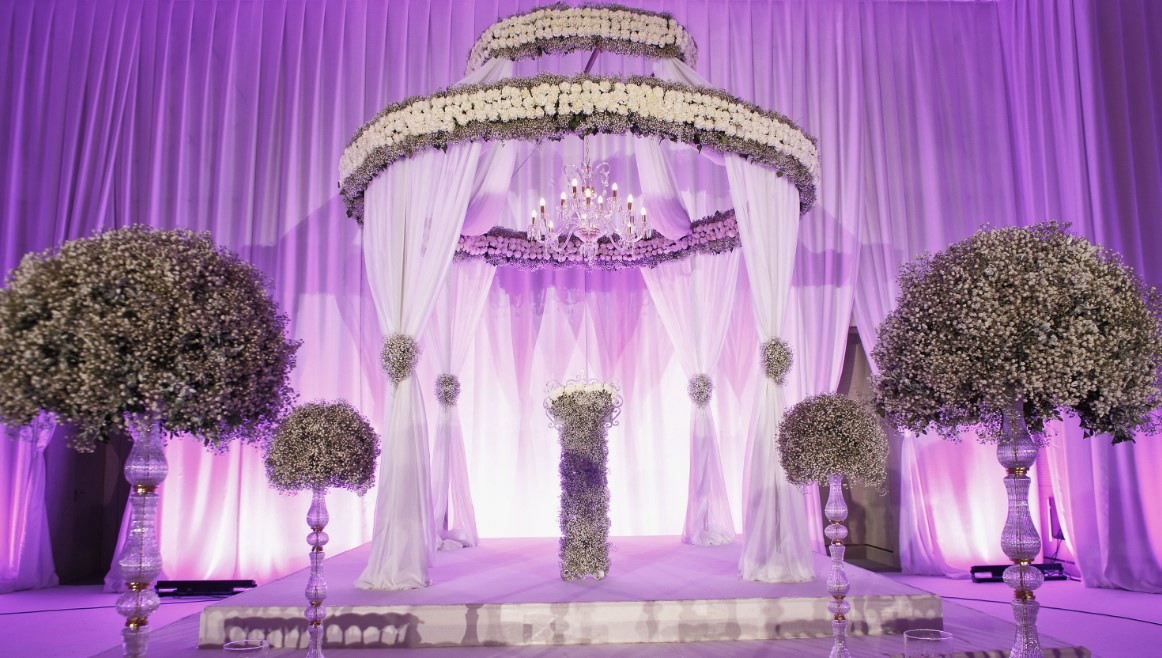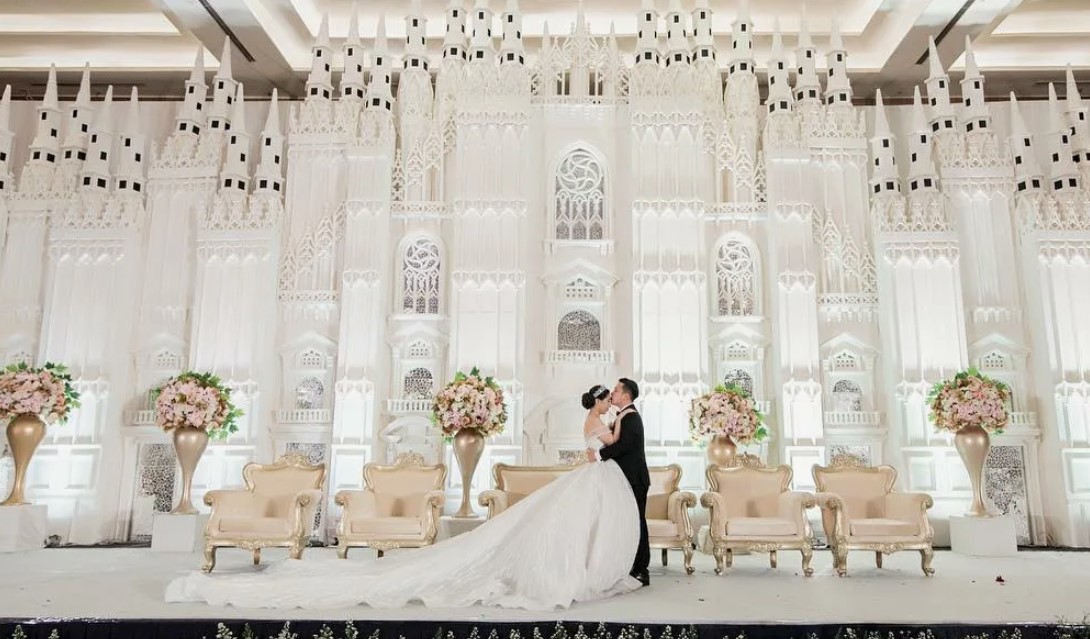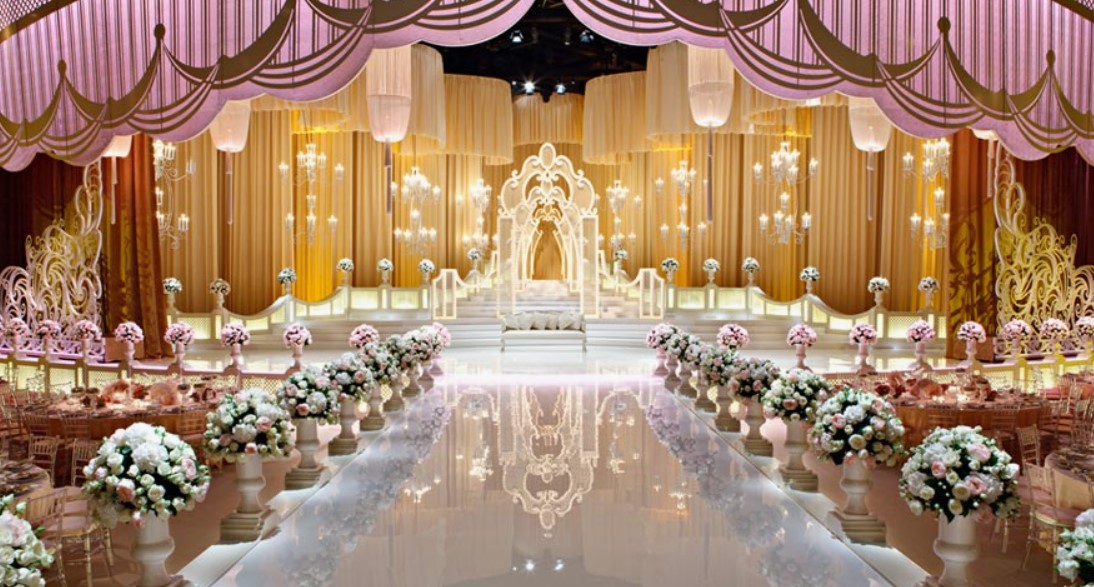Wedding stages are more than just backdrops for ceremonies. They serve as visual representations of the couple’s personal style, reflecting their shared journey, values, and individuality. From thematic design to personalized elements, wedding stages have evolved to become storytelling mediums that make the event meaningful. In places like Dubai and the UAE, where weddings are culturally significant and often grand, the customization of wedding stages aligns with both tradition and modern aesthetics. This article explores the importance of personalized wedding stage decoration and how they encapsulate the couple’s identity and relationship narrative.
The Wedding Stage as a Symbolic Centerpiece
Wedding stages hold symbolic importance, often becoming the focal point of the event. They are designed not only for visual appeal but to reflect key aspects of the couple’s relationship, such as shared passions or cultural heritage. The placement, color schemes, and materials used are often selected to tell a cohesive story that resonates with the couple’s vision. In multicultural regions like Dubai, wedding stages must also balance personal expression with cultural traditions to ensure inclusiveness and respect for familial customs.
Themes and Storytelling through Stage Design
The theme of a wedding provides a framework for storytelling, and the stage is the most visible expression of that theme. Couples may opt for designs inspired by travel, nature, or shared memories. Wedding planners in Dubai increasingly use curated backdrops, props, and lighting to align stage design with the couple’s life journey. For example, subtle hints like maps, travel icons, or florals native to specific countries can symbolize destinations significant to the couple.
Beyond themes, stage design also incorporates symbolic elements, such as flowers representing love and prosperity or motifs that align with the wedding’s spiritual or cultural significance. Personalized decor elevates the experience by creating a deeper connection between the guests and the couple’s story.

Colors and Materials Reflecting Personal Preferences
Color psychology plays a crucial role in stage design. The selected colors not only reflect the couple’s personality but also influence the emotional ambiance of the wedding. For instance, bold palettes may reflect an adventurous and outgoing couple, while pastel shades convey a sense of calm and elegance. In Dubai, where luxury weddings are prevalent, gold and white are frequently used to signify opulence and purity, while earthy tones resonate with nature-themed celebrations.
Materials also contribute to the personalization of wedding stages. Whether it’s intricate woodwork, metal accents, or natural foliage, the choice of materials reflects the couple’s style and the event’s overall theme. Incorporating personal elements—such as handmade decor or curated floral arrangements—adds authenticity and emotional value.
Cultural and Regional Influence in Dubai’s Wedding Stage Design
Dubai’s wedding industry is characterized by its diversity, with events influenced by traditions from various cultures. Wedding stages often blend elements from multiple traditions to represent the couple’s cultural backgrounds. In many Emirati weddings, for example, traditional motifs and intricate floral patterns are incorporated into the stage design to honor heritage. Similarly, the use of specific flowers, fabrics, and geometric designs aligns with the symbolism found in Middle Eastern culture.
The inclusion of regional elements allows couples to remain connected to their roots while expressing their individuality. Customized decor in Dubai’s wedding stages reflects both modern trends and traditional aesthetics, offering a balance that appeals to families and couples alike.
Interactive Elements in Stage Design
Interactive stage elements engage guests and enhance the wedding experience. Features like digital backdrops, projection mapping, or light installations allow the couple’s journey to be displayed creatively. For instance, projection mapping can transform the wedding stage with animations that reflect key moments from the couple’s life. These dynamic elements create an immersive experience, ensuring that guests feel emotionally connected to the event.
Another popular trend is the inclusion of photo zones within or near the wedding stage, encouraging guests to interact with the design. Interactive stages not only captivate guests but also provide unique opportunities for wedding photography, preserving memories in an aesthetically meaningful setting.
Sustainability in Personalized Wedding Stages
As sustainability becomes a growing priority in the UAE, couples are increasingly opting for eco-conscious wedding decor. Personalization can align with environmental values by using reusable elements, locally sourced flowers, or minimalistic designs that reduce waste. Dubai’s focus on green initiatives influences how wedding planners incorporate sustainable practices into event design. Modular stages that can be reconfigured for multiple uses or stages adorned with seasonal plants reflect the couple’s commitment to sustainability.
Sustainable personalization resonates with couples who wish to align their wedding celebrations with their broader values. Such designs also inspire other couples to consider environmentally friendly choices in their own events.

Lighting Design Enhancing Personal Style and Atmosphere
Lighting plays a pivotal role in wedding stage design, accentuating decor elements and shaping the overall atmosphere. Customized lighting schemes, such as soft glows for romantic themes or vibrant hues for lively celebrations, reflect the couple’s style and enhance the visual impact of the stage. In Dubai’s vibrant wedding industry, dynamic lighting solutions are used to highlight specific moments, such as the couple’s entrance or their first dance.
The use of candles, chandeliers, or LED installations adds depth to the design, creating a mood that aligns with the couple’s preferences. Lighting also interacts with other decor elements, enhancing colors and textures to ensure that the stage looks stunning in both real life and photography.
Balancing Tradition and Personalization in Wedding Stages
While personalization allows couples to express their uniqueness, it is often essential to incorporate traditions to honor family expectations. In Dubai, balancing modern elements with traditional decor is a common practice. Couples may include traditional seating arrangements, floral motifs, or ceremonial elements to reflect their cultural roots while adding personal touches to the overall design.
This blend ensures that the wedding stage appeals to both the couple and their families. The thoughtful inclusion of traditions within a personalized framework creates harmony between innovation and heritage, making the event memorable for all attendees.
Conclusion
Wedding stages serve as more than ornamental features; they are symbolic expressions of a couple’s identity and shared journey. By aligning decor with personal preferences, cultural traditions, and environmental values, couples create stages that resonate with meaning. Dubai’s wedding industry reflects these trends, offering a range of customization options that cater to diverse tastes and traditions.
Whether through interactive designs, regional influences, or sustainable elements, personalized wedding stages enhance the emotional significance of the event, leaving a lasting impression on guests. By carefully planning every element, couples can create a wedding stage that not only reflects their relationship but also celebrates the start of a new chapter in their lives. For more information on wedding decor trends and event planning in the UAE, visit the Dubai Tourism and Dubai Municipality websites.

Skateboarder, foodie, music blogger, International Swiss style practitioner and RISD grad. Acting at the sweet spot between beauty and mathematics to express ideas through design. I prefer clear logic to decoration.
